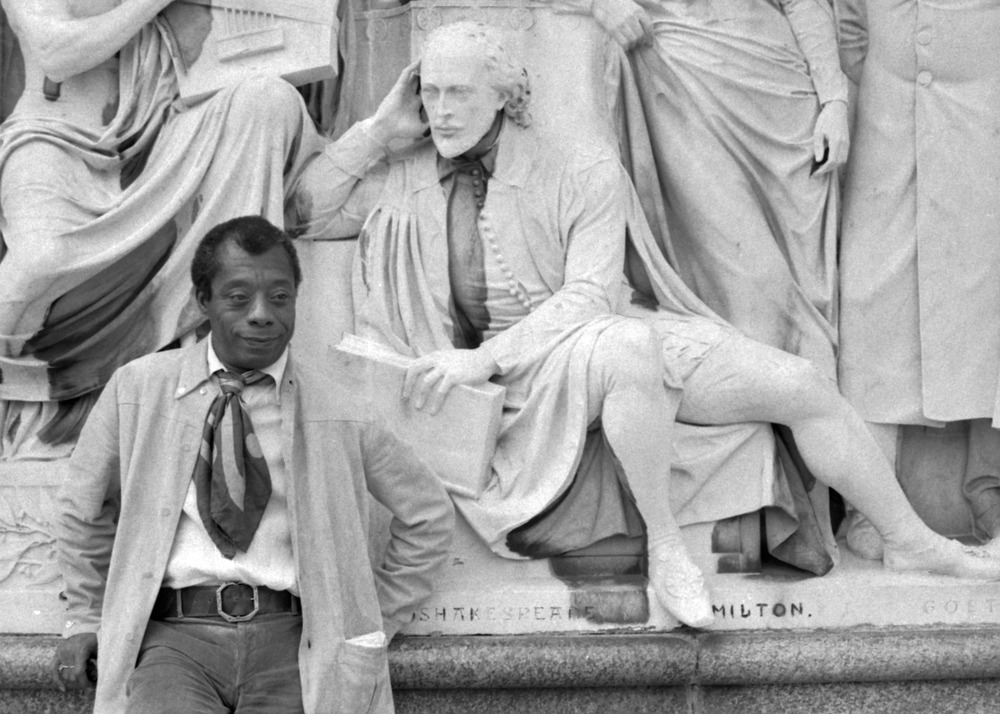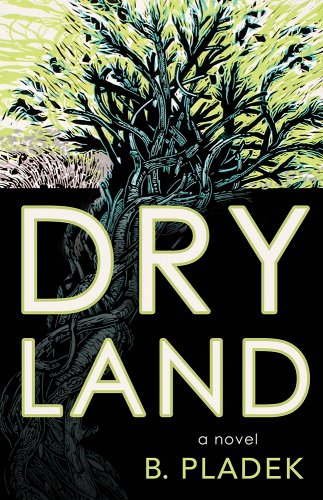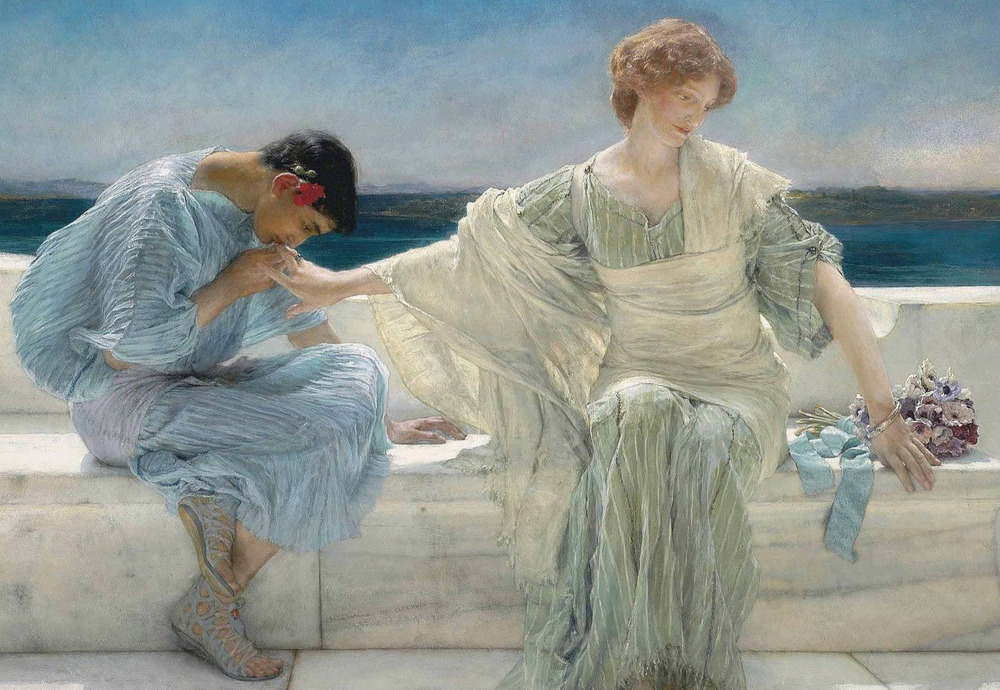Reading Lists
9 Historical Novels by 20th-Century Queer Writers
Queer people have been writing historical fiction since before queerness existed

Queer people have been writing historical fiction since before queerness existed—by which I mean, since before it was hammered into an antithesis to heterosexuality during the long nineteenth century. By the turn of the twentieth, queers looking to write about the past had to grapple with new, rigid identity categories that didn’t necessarily reflect how they saw themselves or their histories.
That’s why I’m so interested in queer historicals from the first half of the twentieth century. My novel Dry Land opens in 1917, twenty-two years after Oscar Wilde’s trial and two before Magnus Hirschfeld founded the Berlin Institute of Sexology. It was a time of fluidity and fear, expansion and repression, at least in Wisconsin, where Dry Land is set. Robust networks of self-identifying queers existed in cities like Milwaukee and were forming in rural areas; the boundary between gay and trans was murky, crossed joyously or dangerously depending on wealth, race, and location; and in the US Army, where my protagonist Rand gets drafted, sodomy (but not, technically, homosexuality) could land you in prison.
Queer writers working in this era and the decades that followed turned to many different pasts to understand their paradoxical present. Some, like Langston Hughes and James Baldwin, examined the immediate history of their own childhoods to chart the origins of the restrictions they faced as adults. Others, like Mary Renault and Bryher, sought the distant past, exploring eras where social constraints on sexuality felt freer because they looked very different.
Today we’re lucky to be living in a golden age of queer fiction, which is especially rich in historicals and SFF (Dry Land is mildly SFF too, since it’s about a man with the magical power to grow plants). In terms of what they offer readers, queer SFF and queer historicals are two sides of the same coin. If queer SFF carves new exterior possibilities from the existing strictures of politics and culture, queer historicals unearth hidden interiors, turning over the stones of the past to find a riot of life, fiery salamanders and jewel-colored beetles. Like their contemporary descendants, the novelists in this list, writing in the muddy margin between the social construction of homosexuality and the formalization of queer rights as a political movement, found great beauty under great pressure.
The Grandmothers by Glenway Wescott (1927)
Glenway Wescott is not well-read today. It’s unfortunate, as he’s an impeccable prose stylist whose 1927 novel The Grandmothers is a closely-observed, semi-autobiographical story of queer ancestry in rural 1800s Wisconsin. Each chapter is told from a different family member’s perspective, but the heart of the book is the kinship that develops between the young, gay Alwyn Towers (a barely-disguised Wescott) and his queer uncles: Hilary, who died in the Civil War; Leander, a veteran bachelor; and Evan, a deserter from the Spanish-American war who takes a new name and adopts Alwyn after reflecting that “he was going to resemble Leander when he grew up.” The book shows how found families are as complicated as biological families, fostering relationships of identity and recognition but not necessarily comfort.
Not Without Laughter by Langston Hughes (1930)
Hughes’s vibrant first novel is, like Wescott’s, a semi-autobiographical bildungsroman. It follows Sandy Rogers, an ambiguously queer black boy growing up in 1912 Lawrence, Kansas. Through Sandy’s eyes, Hughes documents the complex interplay of gender, sexuality, and colorism in poor black communities of the Midwest. Raised by his grandmother and sharing her feminine-coded aesthetics—“He liked to clean things, to make them beautiful, to make them shine. Aunt Hager did, too”—Sandy finds the world of masculine posturing he discovers in barbershops, barrooms, and hotel lobbies jointly disturbing and alluring. The book concludes with Sandy’s move to Chicago, where he’s propositioned by a “womanish” man and admits he’s curious, but declines because “he was afraid.”
Summer Will Show by Sylvia Townsend Warner (1936)
Sarah Waters, grand dame of the literate lesbian historical, has called Warner one of the “great under-read British novelists of the twentieth century.” Nowhere is her brilliance clearer than in this exacting, intellectual novel. Set during Paris’s 1848 February Revolution, the warp of Summer Will Show is the romance between Sophia, a fallen English aristocrat, and Minna, a Jewish performer. But the novel’s weave is an unsparing study of different revolutionary temperaments. Even though it seems to retell Warner’s own life-long romance with communist poet Valentine Ackland, the book is mostly an ambivalent account of how those who see revolution as romantic are bound to feel lost when it succeeds. As one barricade-defender remarks, “Whatever one wants, one always has to accept a great deal of rubbish along with it.”
The Friendly Young Ladies by Mary Renault (1944)
Mary Renault is best-known for her meticulously researched gay novels set in ancient Greece, including The Last of the Wine (1956) and a hagiographic trilogy about Alexander the Great. Her WWII novel The Charioteer (1953) was beloved by gay men at midcentury. The Friendly Young Ladies (or The Middle Mist, its original UK title) is her only book about queer women. Set in the 1930s, the novel’s central couple, gentle Helen and butch Leo, live on a houseboat in the Thames. There they ward off the advances of various slimy men and play disgruntled babysitters to Leo’s runaway sister Elsie. At the book’s striking climax, Leo, who has always considered herself a boy, falls for her cowboy best friend. He writes her a manipulative love-letter claiming he must kill the man in her—“he is you, and has the immortal part of you in his keeping”—in order to love the woman.
The Folded Leaf by William Maxwell (1945)
In the kind of restrained prose you’d expect from the man who edited The New Yorker for half a century, William Maxwell tells a story of teenage infatuation among college boys in 1920s Illinois. Weedy nerd Lymie Peters falls for oblivious if good-hearted jock Spud Latham. The moment Lymie realizes that what he’s feeling is love is quietly devastating: “Something had burst inside of him, something more important than any organ, and there was a flowing which was like blood.” Lymie’s jealousy over Spud nearly ends in suicide. We don’t normally consider Maxwell a queer writer, and while he disclaimed queer readings of this novel, he also said that “the whole of my youth is in it” and could not complete it until he underwent extensive psychoanalysis. Hmm.
Memoirs of Hadrian by Marguerite Yourcenar (1951)
Marguerite Yourcenar was the first woman elected to the Académie Française. Memoirs of Hadrian is her masterpiece, a rigorously researched meditation written from the perspective of the Roman emperor as he awaits death. Its central drama is Hadrian’s love for Antinous, a beautiful Bithynian youth who dies at nineteen, devastating Hadrian and shaping the course of Roman art history. Their love provides occasion for a series of elegant reflections on love, death, and beauty. “That mysterious play which extends from love of a body to love of an entire person has seemed to me noble enough to consecrate to it one part of my life,” Hadrian remarks. “Reason stands confounded in presence of the veritable prodigy that love is.” Such meditations comprise most of the novel, and they’re so comprehensively imagined it’s hard to remember they’re fiction.
Go Tell It on the Mountain by James Baldwin (1953)
Baldwin’s most famous queer novel is the sublime Giovanni’s Room (1956), followed perhaps by the frank, rhapsodic conclusion of Another Country (1962), where Baldwin’s lovers reflect on how men—even straight men—are destroyed by the lack of male touch. The desire in Go Tell it on the Mountain is more sublimated, but still smolders. Baldwin’s first, semi-autobiographical novel recalls growing up in 1930s Harlem beneath the thumb of an abusive father. John Grimes, the Baldwin character, feels at one stymied and electrified by his Baptist faith, which blends with his longing for Elisha, a young preacher at his family’s church. The book’s climax is a hallucinogenic dream vision where John frees himself from his father’s control by opening himself to a religious ecstasy that’s finally indistinguishable from erotic desire: “The light and the darkness had kissed each other, and were married now, for ever, in the life and the vision of John’s soul.”

Gate to the Sea by Bryher (1958)
Bryher was the life-long partner of modernist poet H.D.; in an iconically trans move, she renamed herself after an island. After two early autobiographical novels about feeling like a boy trapped in a girl’s body, Bryher turned to historical fiction. She wrote eleven historicals, all scrupulously researched and set in the distant past (she and Renault were mutual fans). Gate to the Sea follows Harmonia, the temple priestess among the Greek citizens of conquered 4th-century Poseidonia, as she tries to escape her devastated home. Like several of Bryher’s novels rooted in her experience of WWII—she helped refugees flee the Nazis until she had to flee herself—it’s about watching a beloved world become unrecognizable. It’s also notable for including a character who insists on his pronouns: “‘My name is Myron, not Myro,’ the girl said firmly, stressing the masculine form of the name. ‘I am a boy and I am going to be a sailor.’”
Hav: Last Letters from Hav of the Myrmidons by Jan Morris (1985)
Morris’s only novel, this historical travelogue about a fake mid-20th-century European country is rendered with such verisimilitude that when it appeared in 1985, people tried to book tickets. The book is queer in the expanded sense adopted by literary theory in the ‘90s. Hav has refused, on a national scale, what Lee Edelman terms reproductive futurity. It ignores the siren call of historical purpose, ambling on in “its own entirely separate plane of existence” while cultivating its colorful, idiosyncratic traditions (a wild rooftop race; snow raspberries; a thousand-year-old Iron Dog). Hav is a brilliant travel writer’s extended meditation on the queer project of history itself. Near the book’s conclusion, Morris imagines this exchange: “‘What are you running away from?’ Magda asked me once. I said I wasn’t running away from anything. ‘Of course you are,’ she said. ‘In Hav we are all running.’ Perhaps we are, too, each of us finding our own escape in this narrow sultry cul-de-sac. Like many another cage the peninsula of Hav offers its prisoners a special kind of liberation.” So too history: sanctuary and trap, foreign and familiar, the mirror into which we peer and find more self than we bargained for.









